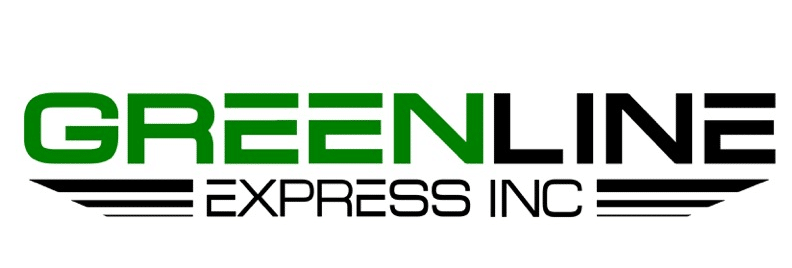Introduction: What Dry LTL Means — And Why Every Dollar Counts
In freight shipping, dry LTL — or dry less-than-truckload shipping — plays a critical role for businesses that don’t need a full trailer but still want reliability. Whether you’re moving packaged foods, textiles, building materials, or electronics, dry LTL helps you ship affordably without paying for unused space. But here’s the challenge: with rising fuel costs, limited carrier availability, and increasing accessorial fees, dry LTL isn’t always the budget-friendly option it promises to be — especially if you’re not strategic about how you use it.
So how do savvy businesses actually save money on dry LTL freight? It starts with understanding the mechanics of pricing, then learning how to optimize routes, pickup times, freight class, and consolidation. But more importantly, it requires knowing what not to do: hidden charges, poor documentation, and inefficient scheduling are the silent profit-killers for many shippers. We’ve helped clients in everything from regional distribution to national eCommerce avoid these traps — and in this guide, we’ll walk you through exactly how.
This isn’t about cutting corners. It’s about being smart, proactive, and getting the most value from every shipment. And if you’re shipping regularly — even a few pallets per week — the savings add up fast. Let’s dive in.
Section 1: Know Your Freight Class — And How to Lower It
Most dry LTL costs are tied to freight class, a standardized number from the National Motor Freight Classification (NMFC) system that affects how much you pay per hundredweight. Freight classes range from 50 to 500, and they’re based on density, stowability, handling, and liability. The lower your class, the less you typically pay.
But here’s the kicker: many shippers overpay because they default to the wrong freight class. Or worse, they guess — which can lead to reclassification charges later.
Real-World Example:
One GreenlineX customer was shipping boxed home goods at Class 150. After we analyzed the density and adjusted packaging to fit more tightly on each pallet, we were able to confidently reclassify the freight to Class 85 — cutting their cost by nearly 30%.
How to lower your freight class:
- Increase density: Use tighter packaging or compressible materials so that the shipment takes up less space.
- Use stackable pallets: Carriers love stackable freight — it improves space efficiency, and some may offer better rates.
- Avoid oversized packaging: A few inches of overhang can push your item into a higher class or result in dimensional pricing.
- Use NMFC lookup tools: Don’t guess. Use the NMFTA database or work with a carrier or broker to get the exact code.
Understanding freight class isn’t optional. It’s one of the single most impactful levers you can pull to reduce your dry LTL spend — especially if you’re shipping the same products regularly. Over time, even a 5-class difference can lead to thousands saved per month.
Section 2: Use Regional Carriers to Cut Costs Without Sacrificing Coverage
National carriers have broad networks and high reliability, but that reach comes at a price. In contrast, regional dry LTL carriers often offer more competitive pricing, faster delivery windows, and fewer accessorial fees within their zones — especially for intrastate or short-haul shipping.
Example:
A medical supply company we worked with in Northern California was using a national carrier for weekly pallet shipments to facilities in the Bay Area and Sacramento. By switching to a regional carrier with a hub in Stockton, their average per-shipment cost dropped by 22%, and transit times improved by a full day.
Why regional LTL carriers save you money:
- They’re closer to your endpoints: This reduces linehaul charges and fuel surcharges.
- Fewer terminal transfers: Less handling = fewer chances of damage and delay.
- More flexible with pickup/delivery windows: Some regional carriers can accommodate earlier pickups or late-afternoon drop-offs without extra charges.
- Specialize in local needs: They may be more familiar with your area’s dock setups, traffic patterns, or access restrictions.
Not every shipment qualifies — and regional coverage isn’t always available for long-haul routes. But for frequent dry LTL shipping within a 250–500 mile radius, this is one of the most effective strategies to lower cost without sacrificing reliability.
Section 3: Avoid Missed Appointments with Better Scheduling Tools
Missed delivery appointments are one of the hidden cost drivers in dry LTL shipping. Whether you’re dealing with a DC, retailer, or distributor, late or missed appointments can trigger rescheduling fees, detention charges, or — worse — a rejected load that has to be redelivered at your expense. And in many cases, it’s not the carrier’s fault — it’s an avoidable scheduling breakdown.
Dry LTL shippers often juggle multiple pickup windows, varying facility requirements, and limited appointment slots — all while trying to minimize idle time. That’s why using proper scheduling tools and coordinating effectively with both your carrier and receiver is critical.
Real-world impact:
We had a customer shipping non-perishable grocery goods to several Midwestern grocery chains. They were relying on manual spreadsheets to track appointment confirmations and BOLs. After implementing a simple TMS integration and switching to a carrier that confirmed windows electronically, their rate of missed appointments dropped from 12% to under 2%. That single change saved over $4,000/month in fees and product handling.
Best practices to improve dry LTL scheduling:
- Use a TMS that supports dock scheduling: Even small platforms like Freightview or MyCarrier can auto-schedule and track appointments with better precision than spreadsheets or email.
- Integrate with your 3PL or carrier portal: Many carriers allow you to view real-time appointment slots or reschedule directly from their portal.
- Confirm delivery readiness with receivers: Inbound receiving teams are often understaffed. A quick 24-hour confirmation prevents surprises.
- Avoid Friday deadlines: Friday is the most common day for LTL delays. Plan for flexibility or earlier delivery windows.
If you’re shipping time-sensitive dry goods — especially into retail or foodservice channels — getting your appointments right is just as important as your freight class. The best rates in the world don’t matter if your shipment gets turned away at the dock.
And if your team is handling both dry and reefer freight, consolidating appointment scheduling can uncover even more efficiencies.
Section 4: Don’t Ignore Accessorial Charges — They Add Up Fast
One of the most underestimated cost traps in dry LTL shipping is accessorial fees — the “extras” added to your invoice for services outside the basic linehaul. These charges may seem small, but they add up fast, especially when you’re running high-frequency or multi-stop routes.
Common accessorial fees you might be getting hit with:
- Liftgate required: $50–$100
- Residential delivery: $75+
- Limited access location: $85 (think schools, military bases, farms)
- Inside delivery: $50–$150
- Reclassification or reweigh: Often $100+
- Detention: Usually billed after 30 minutes of wait time
Why it matters:
Many shippers either don’t see these charges until after the fact or assume they’re unavoidable. But a lot of them are avoidable — or at least reducible — if you know what to look for and communicate clearly with your carrier.
Example:
A beverage distributor we helped was averaging an extra $120 in accessorial fees per shipment without realizing it — mostly from repeat inside deliveries and liftgate usage at small-format retailers. We worked with them to update BOL details, schedule dock-to-dock deliveries whenever possible, and pre-verify delivery locations. The result? A 40% reduction in accessorials in the first month alone.
How to reduce or eliminate accessorials:
- Pre-verify delivery site requirements: Is there a dock? Is a liftgate really needed?
- Clearly mark special requests on the BOL: Don’t let carriers guess. Being transparent avoids re-class fees.
- Group deliveries to reduce repeat fees: One truck, multiple drops — this only works with accurate planning.
- Use a carrier that includes common accessorials in the base rate: Some regional carriers do this to simplify billing.
According to fmcsadot.gov, inconsistent labeling and documentation are among the top reasons for freight delays and misclassified charges in LTL shipments. Paying attention to the fine print may not sound exciting — but it’s one of the smartest moves you can make if you’re trying to control dry LTL costs long term.
Section 5: Consolidate Dry LTL Freight Whenever Possible
One of the most powerful cost-saving levers in dry LTL shipping is consolidation. The more you can combine multiple small shipments into a single palletized load, the more you reduce per-shipment costs, improve efficiency, and minimize handling risk.
Most shippers know this in theory. But in practice, freight gets booked piecemeal — driven by department silos, fluctuating order volumes, or unclear lead times. This is especially common in consumer packaged goods (CPG), medical supply, or food distribution sectors, where demand is variable.
A client story:
A regional food brand in Northern California was regularly sending four to five pallets per week to a distribution center in the Midwest — but across three separate orders. By shifting to a twice-weekly consolidated dry LTL shipment, they reduced total shipping costs by 28%, improved order tracking, and lowered their OS&D (over, short, and damaged) claims by nearly half.
What effective consolidation looks like:
- Combine orders across business units: Coordinate order cycles internally so departments aren’t booking blind.
- Work with a 3PL or freight partner: A well-networked LTL partner (like GreenlineX) can help consolidate loads from different vendors to the same destination.
- Stagger non-urgent freight: Don’t rush every shipment out the door. Hold non-time-sensitive freight for 1–2 days to combine runs.
- Use warehouse cross-docking: Facilities like ours in Sacramento are designed to receive partial loads, combine them, and redistribute efficiently — saving you both money and time.
For many shippers, dry LTL isn’t just a tactical decision — it’s a daily operational rhythm. And if you’re sending freight regularly, smart consolidation is no longer optional. It’s the difference between reactive shipping and a true logistics strategy.
Conclusion: Freight Costs Are Rising — But You Still Have Control
The truth is, dry LTL shipping doesn’t have to drain your logistics budget. From choosing the right carriers and freight classes to mastering your scheduling, consolidation, and documentation, you can save thousands per month without sacrificing delivery performance.
But it takes more than just good intentions. It takes the right partner.
At GreenlineX, we help businesses across California and the Midwest make smarter shipping decisions every day — with hybrid asset-brokerage solutions, real crossdock support, and a team that actually answers the phone when you need help.
📦 Ready to make your dry LTL freight work smarter? Start here: GreenlineX.net
Want to go deeper into the data that drives smarter logistics decisions? Learn more from trusted public sources like transportation.gov — and keep refining your freight game.



